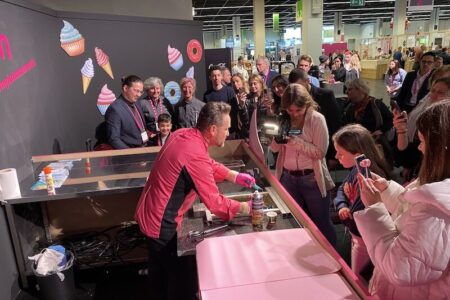Mindful choices a key food trend for 2018

Making mindful choices is among the key food driver for 2018, new research suggests, with seven in 10 US and UK consumers wanting to know and understand the ingredients that go into the products they buy.
The increasingly thoughtful and mindful consumer will continue to catalyse changes in the way that companies produce, package and label their products.
More conscious than ever about making responsible food choices, four in 10 US and UK consumers increased their consumption of so-called healthy foods, according to Innova Market Insights, and one in five in the US are most influenced by real ingredients, and ethical claims on packaging are top of mind.
In response, better for you claims continue to be on-trend, having increased their market penetration from 42% in 2012 to 49% in 2017 year to date.
Lu Ann Williams, director of innovation at Innova Market Insights, says, “Today’s consumer displays a high level of mindfulness about well-being and the environment.
“So, it is no surprise that consumers are becoming increasingly mindful in their food choices, wanting to know what is in their foods in order to make decisions about health, sustainability and ethical issues.”
Mindful Choices leads the list of Innova Market Insights’ top ten trends for 2018, where the company continuously analyses global developments in food and drinks launch activity and consumer research to highlight the trends most likely to impact the food and drinks industry over the coming year and beyond.
Consumers are more conscious than ever about making responsible food choices, and increasingly want to know what is in their food and how it is produced.
Innova Market Insights research data indicates that one in two US, UK and German consumers read ingredient labels often. At the same time, rising levels of interest in ethical issues have resulted in the use of ethical claims for food and drink new product development increasing in recent years, with a CAGR of 44% over the 2011-2016 period.
Second on the list is Lighter enjoyment. As consumers continue to look for ways to eat and drink more healthily, lightness in terms of alcohol content, sweetness, flavour, texture or even portion size is increasing its appeal, although definitely not at the expense of a familiar, high quality and indulgent taste profile
Third is positively processed. As consumers become more concerned about naturalness and minimal processing techniques, the industry is reviving traditional processes such as fermented foods and cold brew tea and coffee, alongside the development of new ones.
Coming in at four is going full circle. The notion of closing the circle is increasingly taking hold, with greater consumer expectation that companies and brands will be more resource-smart via developments such as tip-to-tail eating, innovative uses for food waste and more biodegradable and renewable packaging.
And the fifth top trend is Beyond the coffeehouse. While coffee is clearly trending among millennial and generation Z consumers, tea is also seeking to reinvent itself among the younger generations.
With the taste and experiential associations of coffee and the healthy image of tea, the industry is increasingly using coffee and tea as ingredients and flavours outside the hot drinks and iced tea and coffee sub-categories across a variety of products as varied as energy bars, yogurt and jam.



